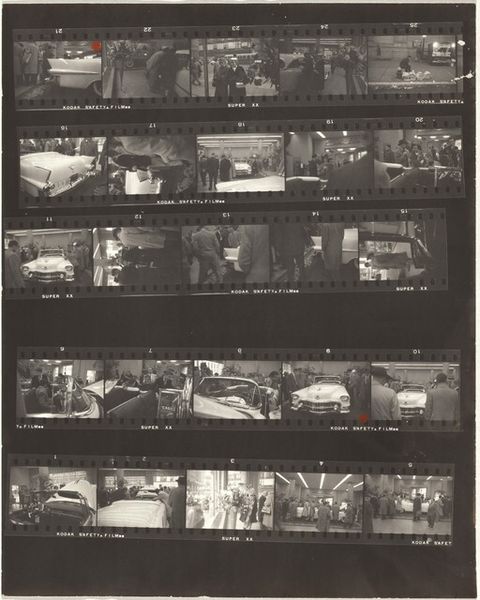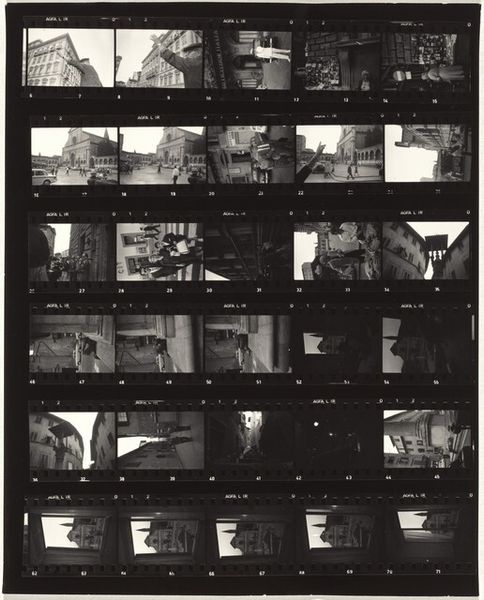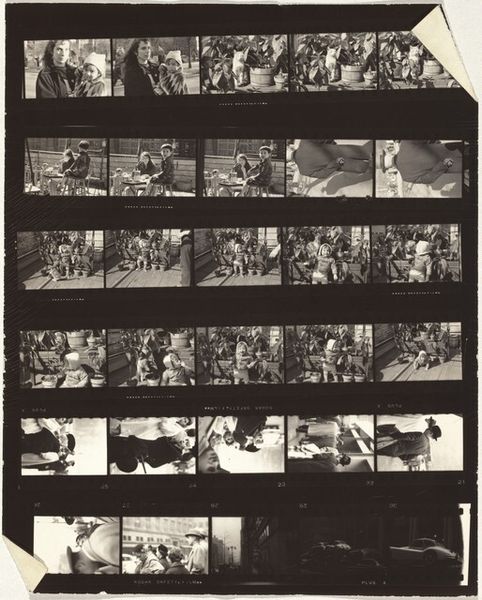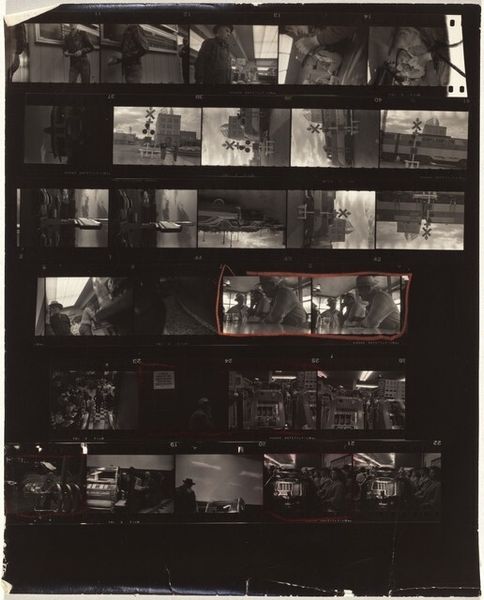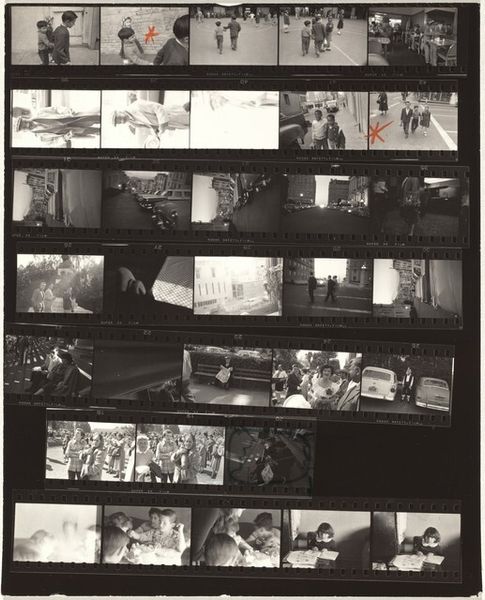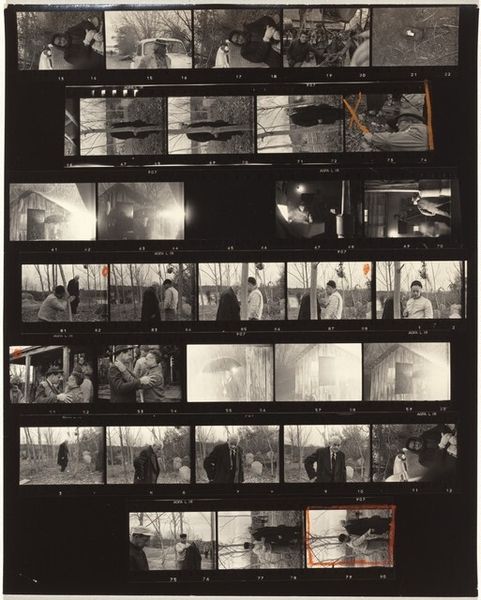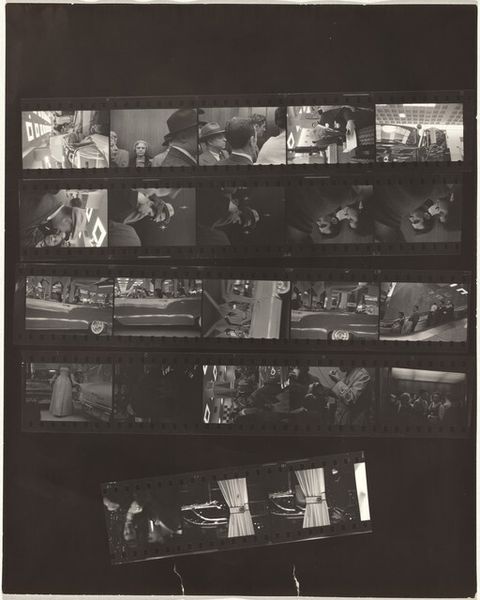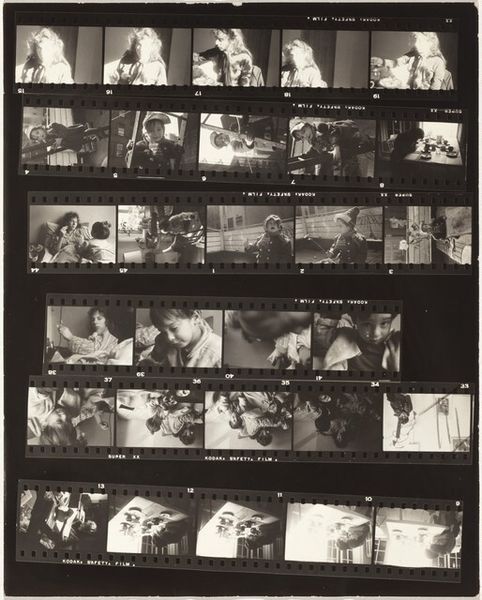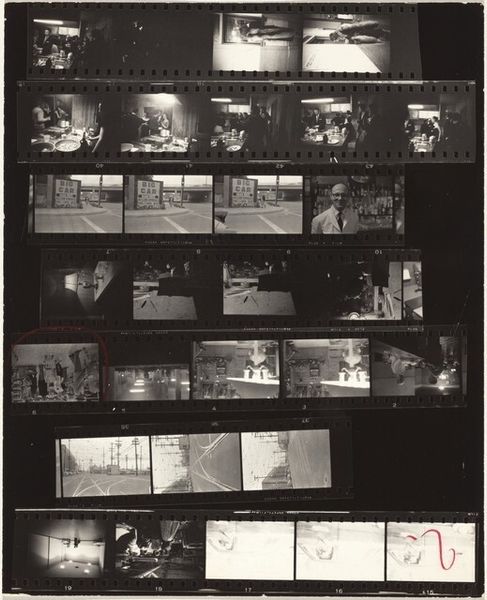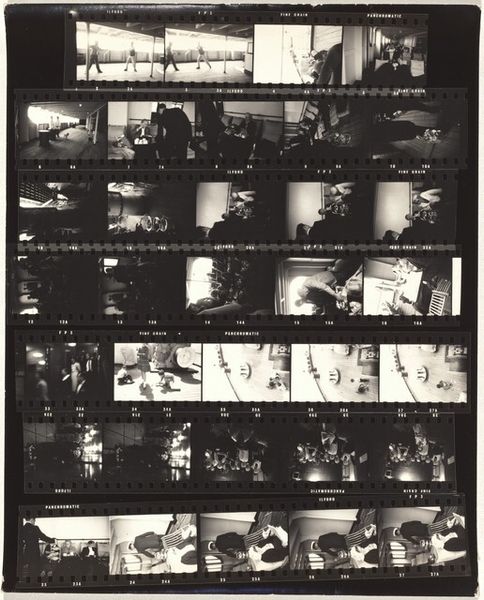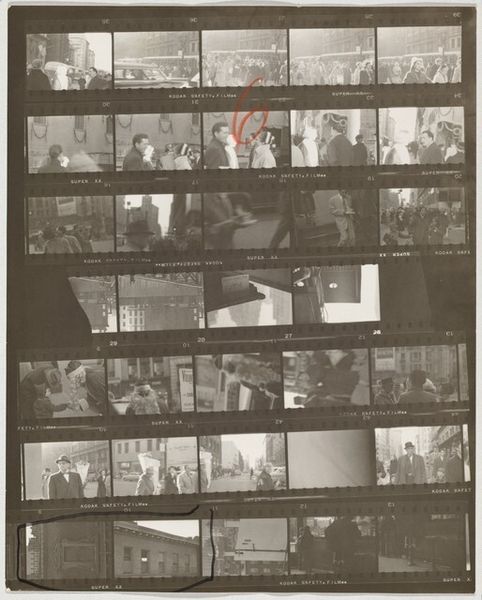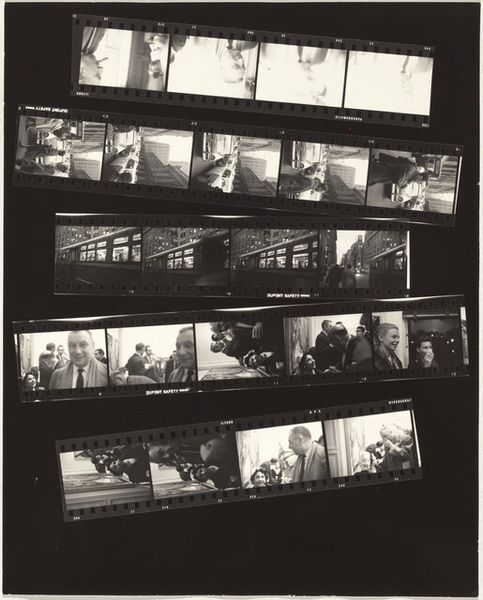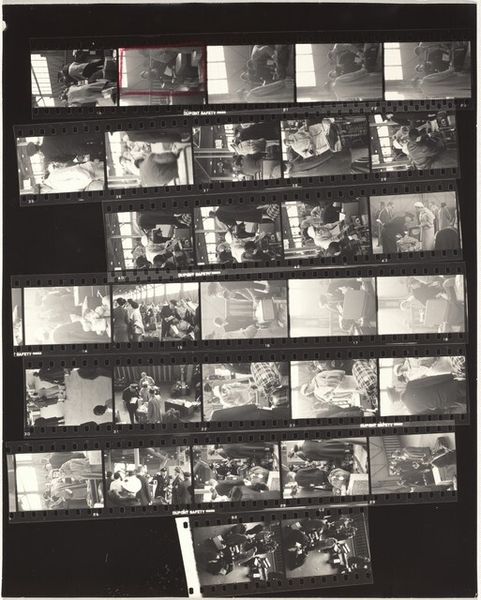
Dimensions: overall: 25.3 x 20.4 cm (9 15/16 x 8 1/16 in.)
Copyright: National Gallery of Art: CC0 1.0
Editor: So, this is Robert Frank’s "Guggenheim 338--New Orleans, Louisiana" from 1955, a gelatin-silver print showing several contact sheets. I’m immediately struck by the way Frank documents daily life. How does its social context shape our understanding of this photographic artwork? Curator: Frank’s work, especially within the context of his larger project "The Americans," functions as a stark commentary on American society in the mid-20th century. Consider the socio-political landscape: post-war prosperity juxtaposed with underlying racial tensions and social inequalities. How do you see these reflected in the fragmented presentation of the contact sheet, hinting at incomplete narratives? Editor: I notice moments of mundane city life, like storefronts and pedestrians, existing alongside possible scenes of segregation. The candid approach almost feels voyeuristic. Were Frank’s photographs trying to challenge dominant cultural narratives? Curator: Absolutely. His work directly challenged the idealized images often promoted by mainstream media. Think about who held power, who controlled the narrative, and who was being excluded or misrepresented. Frank gives visual form to counter-narratives, presenting a more complex and, at times, unsettling picture of American life. Notice how he avoids glorifying or romanticizing his subjects. What feeling does this create? Editor: It’s a bit bleak, a critique maybe? I guess I always considered street photography to be objective. It's surprising to see Frank challenging societal norms and institutions. I initially missed that entirely. Curator: Consider that museums and galleries, by selecting and presenting artwork like Frank's, participate in constructing these narratives as well. These photographs gained significant traction precisely because of their powerful commentary on public life, making a potent political statement. What has this dialogue brought into sharper focus for you? Editor: Thinking about photography as not just capturing moments, but also shaping opinions and driving cultural commentary – that's something new for me. Curator: Exactly. It reveals that art engages society, whether intentionally or unintentionally, which transforms my interpretation as well.
Comments
No comments
Be the first to comment and join the conversation on the ultimate creative platform.
